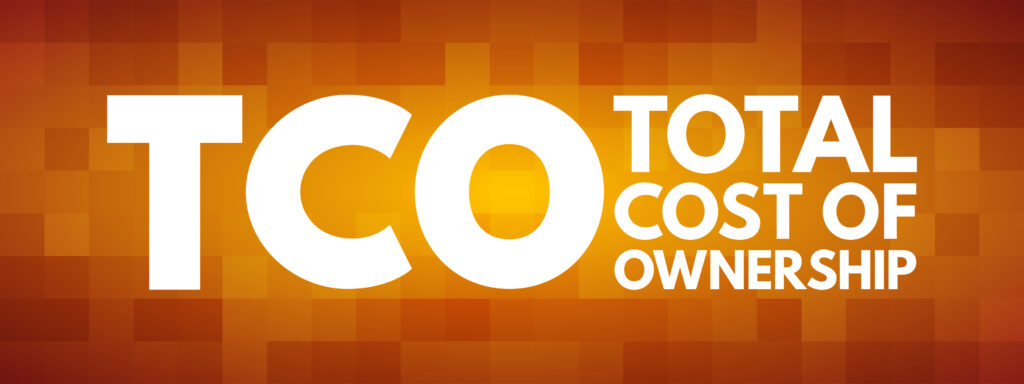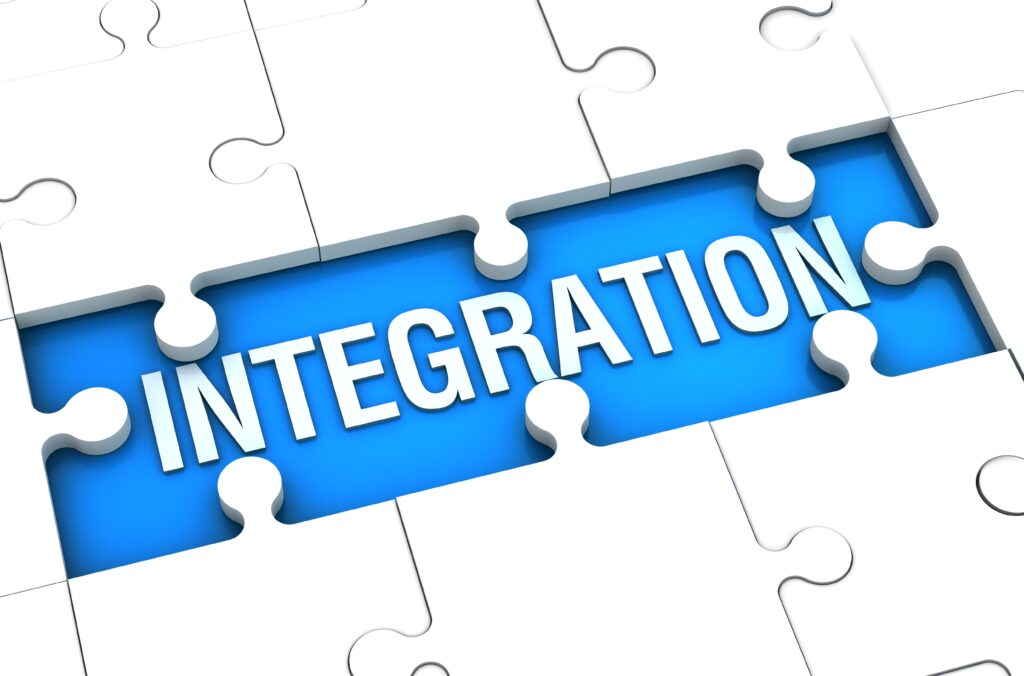Pricing Software: Build vs Buy – Which is Best for You?
February 15th, 2022 (Updated 03/10/2023) | 13 min. read
By Garth Hoff
You’ve been tasked with moving your company through a pricing digital transformation… an unenviable task at the best of times. But in this ‘new’ world, where being able to adapt to the unforeseeable is critical, digital maturity has become urgent. You’re expected to lead your company through an ROI- and agility-boosting pricing revolution that delivers excellent Time to Value (TTV) but keeps Total Cost of Ownership (TCO) to a minimum. The first (and biggest) question you must answer is: Build vs Buy—should you build your own software and design it around your actual processes, or should you buy professional pricing software and configure it to meet your needs?
It’s not as simple as it sounds. We mean, you don’t want to expose your company to either a high-risk situation or a high-cost future. You don’t want to find yourself locked into expensive technology or committed to endless maintenance obligations.
At Pricefx, we have spent the last decade watching professionals like you deliberate over this decision. And yes, of course, we’re undoubtedly biased—we love pricing software and all the benefits it brings. But it’s not for everyone. We pride ourselves on our honest first policy and are committed to sharing our honest assessment of whether building your own software or buying it is best.
Let’s explore the critical considerations and potential consequences of your Build vs. Buy software decision and get you closer to working out which approach is best for your team, budget, and goals.
Build vs Buy: 9 Critical Elements Compared
1. Total Cost of Ownership

Probably your most important consideration. Surely investing in new software is going to be costlier than building your own…. Or is it?
BUILD: Building your own software gives you better control over your budget. But it’s important to note that it must take the cost burden of the entire project into account; the initial build, implementation, integrations, migrations, testing, bug fixing, support, ongoing maintenance, security, upgrades, keeping up with advancements, and any change management resources required. Choosing to have full control of all these elements can be empowering,but can work out much more expensive than you might think. And that’s just if things are delivered on time…
BUY: Of course, buying pricing software comes with an initial outlay that you wouldn’t be facing with a build. However, a cloud-native solution means you’ll be paying a monthly subscription rather than a large upfront amount (often much less than you’d pay to support a one-off application). All ongoing maintenance, security, upgrades, and new features are, depending on the vendor, included in your subscription, so you’re always on the latest version and well ahead of the curve. Your vendor supports you in getting the project completed on time and on budget. This is where your TCO starts to balance out with your TTV and ROI.
2. Level of Control
When you’re investing a lot of time of money, you like to feel in control. And when it comes to whether to build or buy your pricing software, control comes at a cost.
BUILD: Unlike with purchased software, when you build in-house, you have 100% control over your software and how it functions and can tailor it to meet your exacting needs. This does, however, mean you’re in charge of all decisions around it and are reliant on your busy in-house developers to build and maintain it.
BUY: The hard truth is that you’re never going get 100% of what you’re looking for in a SaaS solution. Some configuration will almost always be required. The more complex your pricing and processes, the more configuration needed. If professional software fits between 60% and 80% of your requirements, it’s the way to go.
3. Flexibility and Agility
I’m sorry to be the one to tell you, but you’re not a unicorn. While your needs and processes are indeed unique, a decade in the business has taught us that underneath the glitter and rainbows, all businesses across all industries need the same set of configurable tools to execute smart pricing. What they do with those tools, however, may differ wildly, and that’s why you need to ensure flexibility has been built in.
BUILD: The tool you build to match your exact needs will likely be hard-coded into one shape, making it very difficult to update or change without going back to the drawing board and waiting weeks for IT to write new code for you (more time and testing, less autonomy and agility). Let’s hope nothing unprecedented happens that takes the world by storm….
BUY: A pricing solution that supports a high level of low-code configuration along with no-code interfaces designed for business users boosts your pricing strategy agility as you’re able to quickly adapt to changes without having to get your IT team to completely overhaul your pricing solution. What’s more, a SaaS solution means you’re not locked in to any one vendor are can easily move on if it’s not working for you, with reduces your risk, too.
4. Connectivity and Integrations

Your company has an existing ecosystem of applications that all need to be compatible with your new pricing solution so that a seamless bilateral flow of juicy data is available and in the right place to inform your decisions and supersize your pricing efforts.
BUILD: You know your processes and systems better than anyone else, so building your own pricing software can help ensure that these connections are set up. However, stitching multiple systems together in a way that guarantees smooth data exchange is an extensive process requiring time and a high level of skill from your IT team.
BUY: Most commercial software solutions have been designed for this very purpose. For example, our software connects seamlessly to your existing technology stack through APIs to ensure your data is always up to date and delivers the best insights. The relative ease with which integrations can be made means you’ll be able to connect with even more sources for even deeper insights (like raw material indices, competitor prices, market data, social media, weather…).
5. Maintenance and Extensibility
Alas, everything in life requires maintenance. This category provides key decision-swaying differences in your Build vs. Buy conundrum.
Build: When you build your own software, you are in charge of its maintenance. This includes handling upgrades, bug fixes, password setups, and developing new features. Your internal team—as proficient as it is—is not likely to have the same level of expertise as those looking after your cloud-based professional pricing solution (especially when it comes to dealing with complex architectures, multiple geographical locations, and complicated data regulations), nor, perhaps the bandwidth.
Buy: As we’ve seen, SaaS pricing vendors handle all maintenance and upgrades of your pricing solution as part of your subscription. The system comes with a whole host of top pricing tools, ready for you to grow into, and was designed with industry best practices built in.
6. Breadth of Capability
Your pricing capabilities as a business are measured by the skills and experience in your team, the processes they use, their ability to execute on their experience (as well as on things not in their sphere of experience), plus their ability to innovate on an ongoing basis.
BUILD: If you’re like most companies, you will have a limited pool of in-house pricing experience. Even if your team is built of very experienced pricing specialists with strong capabilities; it is still unlikely you will match the breadth or depth of experience a specialist software company will bring. Your team must be able to operationalize a software tool based on their experience, something that requires a level of coordination, domain experience, and technical skill not typically found outside of a software development firm. Besides which, the level of innovation required to continue to provide software at the cutting edge of optimization, price management, CPQ, and pricing-adjacent domain areas requires enormous investment in R&D.
BUY: You won’t get a better score in the Capabilities category than with a professional pricing solution. It has been designed by pricing experts (with a vast amount of pricing experience across all industries, scenarios, and use cases), and packaged by top-level developers into an easy-to-use platform that enables business users to apply mediocre experience to execute mind-bogglingly sophisticated pricing wizardry. By housing your pricing processes inside such a platform, you guarantee longevity of your investment as your software is always up to date, and the people who designed it are already working on the next innovation destined to take you to yet another level of pricing.
7. Time to Value

This is the crunch: How long will it take you to realize value from your investment?
BUILD: the average self-build can take years. So, on top of requirements often falling short of addressing the problems it was created to solve, you’re unlikely to send the completed solution back to the shop for updates to meet your evolving needs. A subpar solution will impact adoption, TTV, and ROI.
BUY: When time is of the essence, buying SaaS software helps you get moving quickly. In our case, 30% of our customers see it ROI in 6 months or less. about xx faster, in fact. It can be configured to suit your exact needs much quicker than it would take your IT team to build from scratch, and to a much higher pricing and technical standard (as the people behind it are experts in both those areas). The user-friendly interface improves adoption, too, bringing forward your TTV.
8. Opportunity Cost
Opportunity cost is the loss of the benefits or value one alternative would have given you when another is chosen. It central to your Build vs. Buy dilemma.
BUILD: How busy is your IT team already? Does it have the people, time and resources to develop a new project? What other (potentially mission-critical or high-profit) activities would you be pulling them away from? Which would be more impactful to the bottom line?
BUY: There is no opportunity cost when you purchase professional pricing software. You simply leverage the vendor’s already-live functionalities, and guide pricing experts in tailoring the perfect pricing solution for you. And let your IT team carry on doing what they do best. It’s important to note, however, that they will be key stakeholders in the data systems integration phase.
9. Supporting Resources
Everyone needs a little support from time to time, and regardless of whether you decide to build or buy your pricing solution, your IT team is sure to need a little helping hand.
BUILD: At the start of the project, your technical people will be faced with a massive blank canvas. And while creatively liberating, this can be daunting. Pricing is not their expertise and despite hours of meetings with the users they’re building it for, they might need some support. Well, unfortunately that’s a blank space, too…
BUY: You may be surprised to learn that your SaaS pricing software will also be a blank canvas! The big difference is that there is pre-configured functionality hidden behind it, ready and waiting to jump into action, and accelerators eager to speed up your Time to Value. Of course, all software providers will offer support. But good ones will place a heavy focus on empowering your self-sufficiency so that you are able to address any changes or issues without having to spend hours on the phone to support. Reputable vendors will offer insightful training to help your team up its game in pricing platform prowess. So rather than working from the ground up, you’re building up from the shoulders of experts.
The Build vs. Buy Software Recap
In a table-shaped nutshell…

Who Should Build?
If you’re looking to automate your current pricing processes, and have the time, people, and resources to build, implement, and maintain your own solution in-house, then it could be right for you. Just be aware that it is likely to take longer and cost more than you anticipate, and if you get stuck, you’re on your own.
You will, however, have full control over its functionality and you won’t be paying for tools you won’t use. This also means they won’t be available to you when your pricing gets more complex, however. And you’ll need to ensure good connectivity and continuous innovation if your solution is going to see you into the future.
Another vote for “build” would be if you’re working on a process that is so highly bespoke that it does not lend itself to process automation. In this case, the margin for what a pricing software’s core competency can do for you might not make sense and you’d be better off building your own unique solution.
Who Should Buy?
If you’re looking to not just digitize current processes, but take our pricing up a gear, then without a doubt, buying the way to go. Whether you have an experience IT team or not, a comprehensive, extensible cloud-based pricing platform backed by pricing experts will reduce TCO and TTV while maximizing ROI. With pricing software, you know your solution is robust, compliant, up to date, and is under constant maintenance and innovation, ensuring you stay at the forefront of pricing excellence.
Our Honest Assessment?
I’m sure it comes as little surprise that our conclusion is: to buy is best.
But we truly believe that. It’s why we’re dedicated to building the best pricing solution on the market—because we believe they deliver the best value.
The Project Management Institute (PMI) found that 43% of IT projects go over budget, 49% come in late, and 14% fail altogether. You can do better than that.
If you’re still deciding whether to buy or build your pricing software, then really it all comes down to one thing: risk.
There is risk when buying software. That’s why we recommend you do your research, seek out references and engage in demos to keep it to a minimum. With home-built solutions, your risk is unlimited because there is no real way to calculate your project costs, length or success.
If after reading this you’d like to explore the buying pathway a little more, then here’s an article on how to choose pricing software that we think you’ll find helpful;
